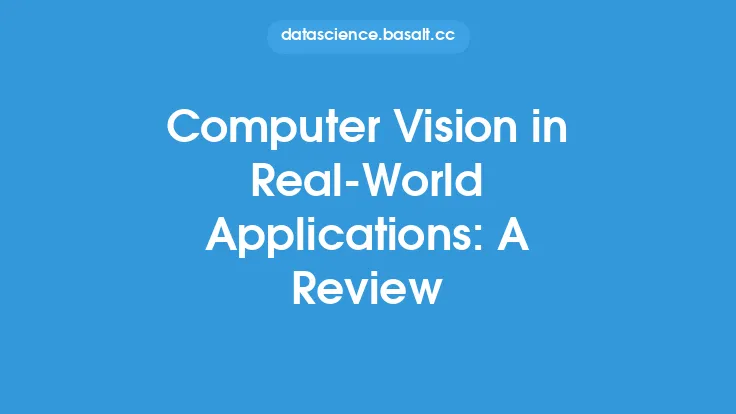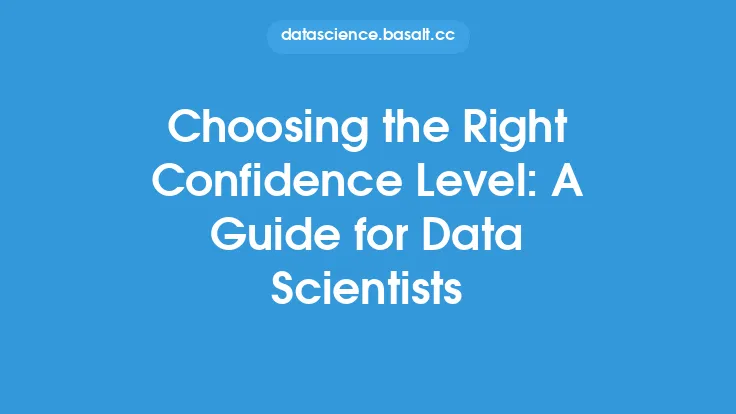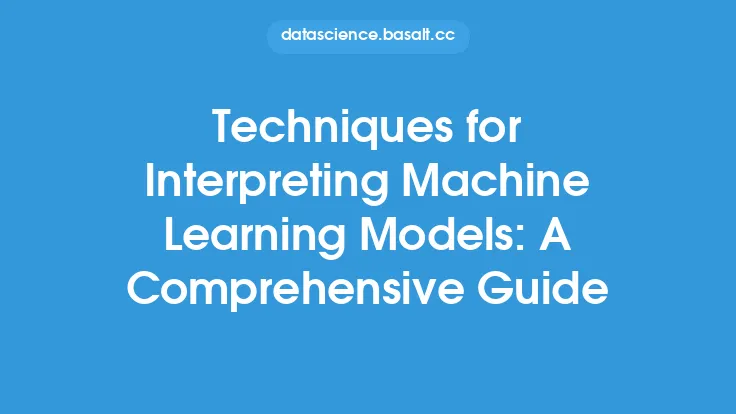Computer vision is a field of study that focuses on enabling computers to interpret and understand visual information from the world. As a data scientist, understanding computer vision is crucial in today's world where images and videos are becoming increasingly important sources of data. In this article, we will delve into the world of computer vision, exploring its concepts, techniques, and applications, and providing a comprehensive overview of the field.
Introduction to Computer Vision Concepts
Computer vision involves a range of concepts and techniques that enable computers to process, analyze, and understand visual data. One of the fundamental concepts in computer vision is image formation, which refers to the process by which images are created. This involves understanding the physics of image formation, including the behavior of light, the properties of cameras, and the effects of noise and distortion. Another key concept is image representation, which refers to the way in which images are stored and processed by computers. This can include techniques such as pixelation, where images are represented as a grid of pixels, each with a specific color and intensity value.
Computer Vision Techniques
There are a range of techniques used in computer vision, including image filtering, thresholding, and feature extraction. Image filtering involves applying algorithms to images to remove noise, enhance features, or extract specific information. Thresholding involves setting a threshold value to separate objects or features of interest from the background. Feature extraction involves identifying and extracting specific features from images, such as edges, lines, or shapes. These techniques are often used in combination to achieve specific goals, such as object recognition, tracking, or scene understanding.
Mathematical Foundations of Computer Vision
Computer vision relies heavily on mathematical techniques, particularly linear algebra, calculus, and probability theory. Linear algebra is used to represent and manipulate images, which are often represented as matrices or vectors. Calculus is used to optimize functions and algorithms, such as those used in image filtering and feature extraction. Probability theory is used to model and analyze uncertainty in images, such as noise or ambiguity. Understanding these mathematical foundations is essential for developing and applying computer vision techniques.
Deep Learning in Computer Vision
In recent years, deep learning has become a dominant approach in computer vision, particularly with the development of convolutional neural networks (CNNs). CNNs are a type of neural network that is specifically designed to process images, using convolutional and pooling layers to extract features and recognize patterns. Deep learning has been used to achieve state-of-the-art results in a range of computer vision tasks, including image classification, object detection, and segmentation. However, deep learning requires large amounts of data and computational resources, and can be challenging to interpret and understand.
Computer Vision Applications
Computer vision has a wide range of applications, including robotics, surveillance, healthcare, and autonomous vehicles. In robotics, computer vision is used to enable robots to perceive and interact with their environment, such as recognizing objects and navigating through spaces. In surveillance, computer vision is used to monitor and analyze video feeds, detecting suspicious behavior or recognizing individuals. In healthcare, computer vision is used to analyze medical images, such as X-rays and MRIs, to diagnose diseases and develop personalized treatment plans. In autonomous vehicles, computer vision is used to perceive and respond to the environment, such as recognizing traffic signals and avoiding obstacles.
Challenges and Limitations of Computer Vision
Despite the many advances and applications of computer vision, there are still several challenges and limitations to the field. One of the main challenges is the complexity and variability of visual data, which can make it difficult to develop robust and generalizable algorithms. Another challenge is the need for large amounts of labeled data, which can be time-consuming and expensive to collect. Additionally, computer vision algorithms can be sensitive to factors such as lighting, pose, and occlusion, which can affect their performance and accuracy. Finally, there are also ethical and social implications of computer vision, such as privacy concerns and bias in algorithms.
Best Practices for Computer Vision Development
To develop effective and reliable computer vision systems, it is essential to follow best practices, such as collecting and labeling high-quality data, selecting appropriate algorithms and techniques, and evaluating and testing systems thoroughly. It is also important to consider the ethical and social implications of computer vision, such as ensuring that algorithms are fair and unbiased, and that they respect individual privacy and autonomy. Additionally, it is essential to stay up-to-date with the latest advances and developments in the field, attending conferences and workshops, and reading research papers and articles.
Future Directions of Computer Vision
The field of computer vision is constantly evolving, with new advances and developments emerging all the time. Some of the future directions of computer vision include the development of more robust and generalizable algorithms, the integration of computer vision with other fields, such as natural language processing and robotics, and the application of computer vision to new and emerging areas, such as augmented and virtual reality. Additionally, there is a growing interest in explainable and transparent computer vision, which involves developing algorithms and systems that are interpretable and understandable by humans. Overall, the future of computer vision is exciting and promising, with many opportunities for innovation and advancement.





